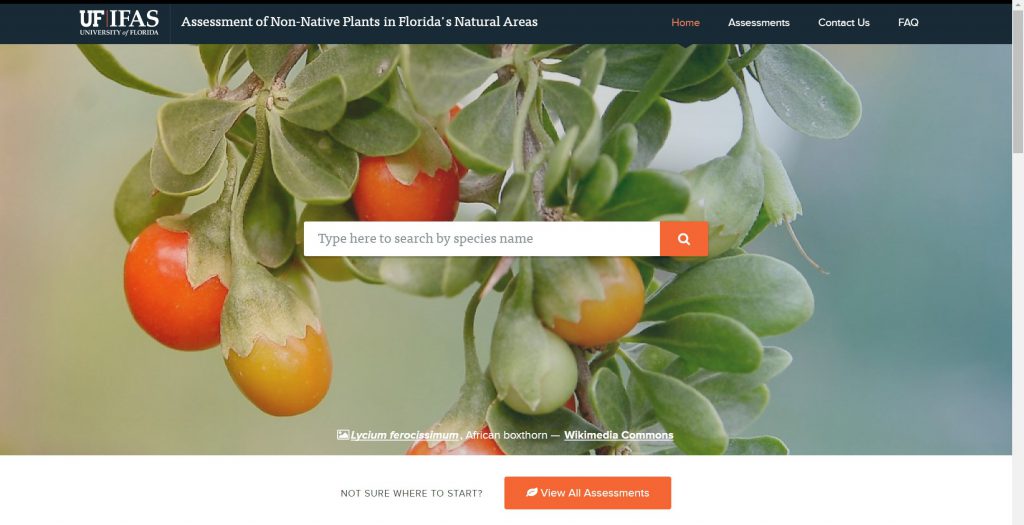One of the main Florida-Friendly Landscaping principles is to plant the right plant in the right place. In Florida, not only does this apply to the zone you’re in, soils you have, and light conditions in your garden, but also ensuring that invasive, exotic plant species are not used. While most of us have heard about invasive, exotic plants – those that invade and disrupt our unique natural habitats – some may not know where or how to find out which plants are, in fact, invasive and exotic. Some of the more famous invasive, exotic plant species, such as kudzu and hydrilla, are familiar to us and we may have an idea of a plant in our garden that is “aggressive”, but how do we know for sure? Since only a handful of the worst invasive, exotic plants are legally prohibited from being sold, how do we know if a plant we are considering purchasing at our local nursery or another plant already in our gardens is an invasive, exotic? A quick internet search for Florida invasive plants gets you various sources of information. How do you choose which to use?

The unique habitats of Florida need our help. Prevent the spread of invasive, exotic species by planting Florida-Friendly plants. Source: Mark Tancig/UF/IFAS.
Fortunately, the researchers at UF/IFAS want you to be able to find the best information in one spot – the UF/IFAS Assessment of Non-Native Plants in Florida’s Natural Areas. This site systematically reviews individual plant species and provides a recommendation as to whether it should be used in North, Central, or South Florida landscapes. Many landscape plants have been reviewed – over 800 – and more are added to the site as reviews are completed. The UF/IFAS Assessment also reviews cultivars of known invasive, exotic plants to ensure that they are sterile and will not revert back to their wild type or hybridize with known invasives, or even closely related native species.

The UF/IFAS Assessment is a simple, convenient source for deciding if a plant should be used in your Florida landscape.
To use the site, simply visit the main web address – assessment.ifas.ufl.edu – and begin typing in your plant name in the search bar. You can begin spelling the scientific or common name and it will start showing possible results as you type. Once you select the plant you’re interested in, it will take you to a new page with photos of the plant, some general information, additional links, and, most importantly, the assessment conclusion for each zone. The conclusion will be one of the following:
- Not considered a problem species at this time,
- Caution, or
- Invasive
Of course, if it’s not a problem, then feel free to use and share that particular plant. If it is a caution plant, then it may be used, but you will want to be extra careful in where you plant it. Those may be better suited as potted plants or planted in areas that are confined, to limit its potential spread. If it’s invasive, don’t plant it.
Caution plants are reassessed every two years while those that are not considered a problem species or are considered invasive are reassessed every ten years.
Another way to use the UF/IFAS Assessment is to filter all reviewed plants by various criteria you’re interested in. If you select assessments on the main page, it will lead you to a list of all reviewed plants. A filter button allows you to choose geographic zone, conclusion type, and growth habit, among some other criteria. This will create a list that can then be exported to a Microsoft Excel table.
As you can see, UF/IFAS is trying to make it easy for you to determine which plants can be used in the landscape without potentially spreading and causing disruption to our unique natural areas.
If you have any questions about individual species that have or have not been assessed, contact your local County Extension Office.
- Tiny Invaders - February 15, 2024
- Bird Feeder Surprises - January 11, 2024
- Storm Cleanup an Opportunity for Practicing Florida Friendly Landscaping Principles - September 7, 2023
